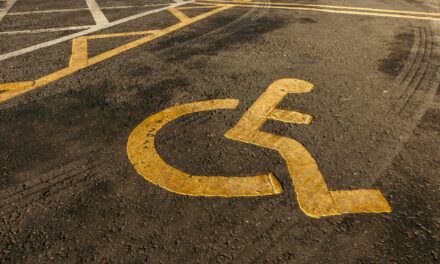Long distance driving can be a daunting task, especially for those who are not used to it. However, with the right tips and tricks, you can make your long road trip more enjoyable and less stressful. In this article, we will discuss some essential long distance driving tips that every driver should keep in mind before embarking on a journey.
- Plan Your Route: Find an Awesome and Scenic Route
- Get Enough Sleep Before the Road Trip
- Prepare Your Car: Check Fluids, Tires, and Brakes
- Check the oil level and quality before the trip
- Ensure the coolant level is sufficient to prevent overheating
- Inspect brake pads and rotors for wear and tear
- Verify tire pressure and condition, including the spare tire
- Test all lights, including headlights, taillights, and turn signals
- Pack an emergency kit with jumper cables, a flashlight, and basic tools
- Pack an Emergency Kit: Be Prepared for Anything
- Make Your Car Comfortable and Organised: Wear Comfortable Clothes and Shoes
- Wear Comfortable Clothes and Shoes: Make Your Car Comfortable and Organised
- Vehicle Maintenance: A Prerequisite for Comfortable Driving
- Adjusting Your Car Seat, Mirrors, and Steering Wheel for Maximum Comfort
- Food and Drinks: Essential for Sustenance During Long Drives
- Weather Conditions: Be Prepared with Appropriate Clothing and Car Cover
- Car Insurance Coverage: Ensure You Are Protected in Case of Accidents or Mishaps
- Take the Right Documentation: Prepare Your Key Documents
- Share the Drive on Your Road Trip: Split the Driving Duties
- Take Frequent Breaks: Rest and Stretch Your Legs Often
- Safe and Enjoyable Long Distance Driving
Distance road trip tips are crucial to ensure that drivers stay alert and avoid driver fatigue. One of the most important tips is to take breaks every few hours. This will help you stretch your legs, relax your muscles, and refresh your mind. It is also essential to stay hydrated during long drives by drinking plenty of water or other non-alcoholic beverages.
Getting enough rest before the trip is another vital point to consider when planning a long road trip. Driver fatigue is a common problem during long drives, which can lead to accidents if not addressed properly. Make sure you get enough sleep before hitting the road so that you are fresh and alert during the drive.
Roadside assistance is also an important idea to keep in mind when planning a long road trip. Unexpected car troubles can happen at any time, so it’s better to be prepared than sorry. Make sure you have all the necessary tools and equipment in case of an emergency.
In addition to these driving tips, there are more driving-related points that you should pay attention to while on the road. For example, always wear your seatbelt while driving and obey traffic rules and regulations at all times. Avoid distractions such as using your phone or eating while driving as they can impair your concentration.
Finally, don’t forget to check related posts or links for more information about long distance driving tips or even roadside assistance services available in your area.
By following these simple yet effective tips for long distance driving, you can make your next road trip safer and more comfortable than ever before!
Plan Your Route: Find an Awesome and Scenic Route
Great Routes to Cruise On
When planning a long distance drive, it is important to choose the right route. A great route can make all the difference in your journey. There are many scenic roads across the country that offer breathtaking views of nature and landmarks. For instance, if you’re driving from Los Angeles to San Francisco, taking the Pacific Coast Highway (PCH) is a must. The PCH offers stunning views of the ocean and mountains along the way. Another great route is Route 66, which stretches from Chicago to Santa Monica. This historic road takes you through small towns and iconic American landmarks.
Planning Your Journey with Navigation Tools
To ensure that you don’t get lost on your journey, it’s essential to plan your route ahead of time using navigation tools like a sat nav or GPS system. These tools can help you find the best routes based on traffic conditions and provide turn-by-turn directions throughout your trip. With these devices at hand, you can easily navigate unfamiliar roads without worrying about getting lost.
Tune into Your Favourite Playlist or Radio Station
Long distance drives can be tiring and monotonous, but tuning into your favourite playlist or radio station can keep you entertained during the drive. Music has been shown to have a positive effect on mood and energy levels, making it an excellent way to stay alert while driving. You could also try listening to audiobooks or podcasts for a change of pace.
Take Breaks for Fresh Air
Driving for extended periods can be exhausting both mentally and physically. Taking breaks every few hours is crucial for staying alert on long journeys. Getting some fresh air and stretching your legs during these breaks will help improve circulation in your body, reducing fatigue and increasing concentration levels when back behind the wheel.
Get Enough Sleep Before the Road Trip
Driving long distances can be tiring and stressful, especially if you’re not well-rested. It’s important to get enough sleep before a road trip to ensure that you’re alert and focused while driving. In this section, we’ll discuss why getting enough sleep is crucial, how much sleep you need, and some tips on how to get a good night’s rest.
Why Getting Enough Sleep Is Crucial
Lack of sleep can cause fatigue, drowsiness, and impaired cognitive function. According to the National Highway Traffic Safety Administration (NHTSA), drowsy driving causes an estimated 100,000 crashes each year in the United States alone. These crashes result in approximately 1,550 deaths and 71,000 injuries annually.
Driving requires constant attention and quick reaction times. If you’re tired or sleepy while driving, your reaction times will slow down significantly. This can increase your risk of accidents as it takes longer for you to respond to unexpected situations on the road.
How Much Sleep You Need
Experts recommend getting at least 7-8 hours of sleep per night leading up to the trip to avoid fatigue. However, everyone’s sleep needs are different. Some people may require more or less sleep than others depending on their age, lifestyle habits, and health conditions.
If you have trouble sleeping at night due to anxiety or stress about the upcoming trip, try relaxation techniques such as deep breathing exercises or meditation before bedtime. Avoid consuming caffeine or alcohol within an hour of bedtime as they can disrupt your sleep patterns and leave you feeling groggy the next day.
Tips for Getting a Good Night’s Rest
Here are some tips for getting a good night’s rest before your road trip:
Prepare Your Car: Check Fluids, Tires, and Brakes
Check the oil level and quality before the trip
Before embarking on a long-distance drive, it is important to check your car’s oil level and quality. The engine oil lubricates the moving parts of the engine, keeping them cool and preventing friction. Without enough oil, your car’s engine could overheat or become damaged, leading to costly repairs.
To check the oil level, park your car on level ground and turn off the engine. Locate the dipstick, usually marked with a yellow handle under the hood of your car. Pull out the dipstick and wipe it clean with a cloth or paper towel. Reinsert it back into its tube all the way down then pull it out again to see where the oil level is at. If it’s below or near minimum mark, add more oil until you reach maximum mark.
It is also important to check for any signs of contamination in your car’s engine oil such as dirt particles or discolouration which may indicate that an oil change is needed.
Ensure the coolant level is sufficient to prevent overheating
The coolant system plays an important role in regulating your car’s temperature by circulating liquid through pipes and hoses around key components like radiator and water pump. Overheating can cause serious damage to your vehicle so ensuring there is enough coolant in your vehicle prior to departure can save you from trouble.
To check if there is enough coolant in your vehicle, locate its reservoir tank which usually has a cap marked “coolant.” Check if there are any cracks or leaks in this tank before opening it up. If everything looks good then remove cap slowly while taking care not to burn yourself since hot steam might escape from inside due to pressure build up when checking while still hot.
Inspect brake pads and rotors for wear and tear
Brakes are one of most critical safety features of any vehicle so inspecting them prior to departure should be taken seriously. Brake pads wear out over time and need to be replaced periodically. Worn-out brake pads can cause reduced braking performance, longer stopping distances, and even brake failure.
To check your brake pads, look through the spokes of your wheel to see if you can see the brake pad. If it is less than 1/4 inch thick, then it’s time for a replacement. You should also inspect your car’s rotors for any signs of wear or damage which could lead to uneven wear on new brake pads.
Verify tire pressure and condition, including the spare tire
Tire pressure is another important factor that affects both safety and fuel efficiency. Under-inflated tires can cause poor handling and increased fuel consumption while overinflated tires can lead to blowouts or reduced traction.
To check your tire pressure, use a tire gauge to measure the air pressure in each tire including the spare tire. The recommended air pressure levels are usually listed in your vehicle manual or on a sticker inside the driver’s door jamb.
In addition to checking air pressure, inspecting your tires for any visible signs of damage such as cracks or bulges is equally important. Any damaged tires should be replaced before embarking on a long-distance drive.
Test all lights, including headlights, taillights, and turn signals
Driving with faulty lights not only puts you at risk but also other drivers on the road so testing all lights prior to departure is crucial. Turn on all exterior lights including headlights, taillights and turn signals while walking around your car to ensure they are working correctly.
If any bulbs are burnt out or flickering then replace them immediately before starting off on your journey since it’s illegal driving without functioning lights especially during night time.
Pack an emergency kit with jumper cables, a flashlight, and basic tools
No matter how well prepared you are there may still be unforeseen circumstances that arise during long distance drives like flat tires or dead batteries hence packing an emergency kit is always a good idea.
An emergency kit should include jumper cables, a flashlight, basic tools like screwdrivers and pliers, and first aid supplies. Having these items on hand can help you deal with minor issues that may arise during your trip.
Pack an Emergency Kit: Be Prepared for Anything
Road trips can be a lot of fun, but they can also come with unexpected surprises. One of the most important things you can do before hitting the road is to pack a roadside safety kit. In this section, we’ll discuss why it’s crucial to have an emergency kit and what items you should include in it.
Why You Need a Roadside Safety Kit
No one ever plans to get stuck on the side of the road, but it happens more often than you might think. Whether you’re dealing with a flat tire or a dead battery, having an emergency kit can make all the difference. It’s not just about being prepared for mechanical issues either – what if you get lost or stranded somewhere without cell service? A well-stocked emergency kit can help keep you safe until help arrives.
What to Include in Your Roadside Safety Kit
Now that we’ve established why having an emergency kit is so important let’s talk about what items you should include in yours. Here are some things to consider:
Spare Tire and Tools: Make sure your car has a spare tire and that you know how to change it. Also, pack any necessary tools like a lug wrench or jack.
Jumper Cables: Dead batteries happen, so make sure you have jumper cables on hand.
Flashlight: If your car breaks down at night, having a flashlight will be essential.
First Aid Kit: Accidents happen, so always have a first aid kit on hand with essentials like bandages and antiseptic wipes.
Water and Snacks: If you’re stranded for any length of time, water and snacks will keep your energy up while waiting for assistance.
Reflective Triangles or Flares: These will alert other drivers that your car is parked on the side of the road.
Emergency Blanket: This could come in handy if you’re stranded somewhere cold or need to stay warm at night.
Make Your Car Comfortable and Organised: Wear Comfortable Clothes and Shoes
Wear Comfortable Clothes and Shoes: Make Your Car Comfortable and Organised
Driving long distances can be a daunting task, especially if you are not adequately prepared. One of the most important aspects of preparing for a long drive is ensuring that you wear comfortable clothes and shoes. This may seem like an insignificant detail, but it can make all the difference in your comfort level during the journey.
Vehicle Maintenance: A Prerequisite for Comfortable Driving
Before embarking on any long journey, it is essential to ensure that your own vehicle is serviced and in good condition. This will not only guarantee your safety but also enhance your driving experience by eliminating unnecessary distractions or discomforts caused by car malfunctions.
Adjusting Your Car Seat, Mirrors, and Steering Wheel for Maximum Comfort
Once you have confirmed that your car is in good working condition, it’s time to focus on making yourself comfortable while driving. The first step towards achieving this goal is adjusting the car seat, mirrors, and steering wheel to suit your body size and shape. Proper adjustment of these components ensures maximum control over the vehicle while minimising fatigue or discomfort during extended periods behind the wheel.
Food and Drinks: Essential for Sustenance During Long Drives
Long drives can be exhausting both physically and mentally; therefore, it’s crucial to keep a small bag of snacks and drinks handy for sustenance during the journey. This will help keep you alert throughout the trip while providing necessary energy boosts whenever needed.
Weather Conditions: Be Prepared with Appropriate Clothing and Car Cover
Weather conditions can change suddenly during long drives; hence it’s vital to be prepared with appropriate clothing such as raincoats or jackets as well as a car cover to protect against harsh weather elements such as hailstorms or snowfall.
Car Insurance Coverage: Ensure You Are Protected in Case of Accidents or Mishaps
Finally, before hitting the road for any long drive, check your car insurance coverage to ensure that you are protected in case of any accidents or mishaps. This will give you peace of mind knowing that you are covered should anything unexpected happen during the journey.
Take the Right Documentation: Prepare Your Key Documents
Driver’s License: The Most Important Document to Have
Long distance driving can be a thrilling experience, but it requires careful planning and preparation. One of the most important things to consider when embarking on a long journey is ensuring that you have all the necessary documentation. Failure to do so can lead to legal troubles, hefty fines, and even accidents. Here are some key documents that you should always have with you when taking on a long distance drive.
First and foremost, your driver’s license is the most crucial document that you should carry with you at all times. It serves as proof of your identity and is required by law in order for you to operate a motor vehicle. Lack of proper identification can lead to serious legal consequences, including fines or even imprisonment. Therefore, before setting off on your journey, make sure that your driver’s license is up-to-date and valid.
Vehicle Registration Documents: Avoid Hefty Fines
Another essential document that you must have with you on a long-distance drive is your vehicle registration documents. These papers provide proof of ownership and registration of your car or truck. They also contain important information such as the make, model, year of manufacture, engine size, and vehicle identification number (VIN). Without these documents in hand while driving through different states or countries may result in hefty fines.
Insurance Papers: Be Prepared for Emergencies
While no one wants to think about getting into an accident while driving long distances, it’s always better to be prepared for emergencies than not. This is where insurance papers come in handy. In case of an accident or any other emergency situation during your trip, having insurance papers readily available will help speed up the process when dealing with authorities or insurance companies.
Digital Copies: Easy Access Anytime
In addition to carrying physical copies of important documents like driver’s license, vehicle registration papers and insurance papers; keeping digital copies can also be helpful in case they get lost or stolen. You can store digital copies of your documents on your phone, laptop, or any other electronic device that you carry with you on your journey. This way, even if you lose the physical copies, you can still access them easily and quickly.
Share the Drive on Your Road Trip: Split the Driving Duties
Split the Driving Duties: Prevent Driver Fatigue and Increase Safety
Planning a road trip is an exciting time. You get to choose your destinations, pack your bags, and hit the open road. But before you start your journey, it’s important to have a discussion about driving responsibilities. Splitting the driving duties can help prevent driver fatigue and increase safety for all passengers.
Discussing Road Trip Planning
Road trip planning should include discussions about driving responsibilities. It’s important to schedule breaks to ensure that everyone is well-rested and alert while behind the wheel. When taking turns driving, make sure that all drivers are covered by temporary car insurance in case of any accidents or incidents on the road.
Playing Road Trip Games
To keep spirits high during long stretches of driving, consider playing road trip games or creating a collaborative driving playlist that everyone can enjoy. This will not only make the drive more enjoyable but also help keep drivers alert and focused on the road.
Communicating Effectively with Other Drivers
When taking turns driving, it’s important to communicate effectively with other drivers in the car. Be mindful of each other’s preferences for things like open windows or adjustments to the driver’s seat. By being respectful of each other’s needs, you can create a more comfortable environment for everyone in the car.
Being Mindful of Areas Alongside Roadsides
It’s also important to be mindful of areas alongside roadsides where you can safely switch drivers without disrupting traffic flow or causing accidents. Make sure that you’re pulling over in designated rest areas or safe locations along the side of the road.
Incorporating Temporary Car Insurance
Temporary car insurance is essential when splitting driving duties on a road trip as it provides coverage for all drivers in case of any accidents or incidents on the road. It’s better to be safe than sorry when it comes to protecting yourself and your passengers while out on a long drive.
Take Frequent Breaks: Rest and Stretch Your Legs Often
Frequent breaks are essential when driving for long periods. Taking regular breaks can help prevent fatigue and keep you alert while on the road. It is recommended to stop at rest stops or other designated areas for breaks, as they provide a safe and convenient place to rest and use the restroom.
Resting and stretching your legs often during long stretches of driving can improve blood circulation and reduce the risk of cramps or other discomforts. When taking a break, it is important to pay attention to your body’s needs. Drinking water is crucial, especially during hot weather conditions, as dehydration can lead to fatigue and dizziness.
It is also important to avoid sugary snacks or fast food that can cause energy crashes. Instead, opt for light snacks such as fruits, nuts, or granola bars that will provide sustained energy without causing spikes in blood sugar levels.
Taking frequent breaks not only helps prevent fatigue but also reduces the risk of accidents caused by drowsy driving. According to a study conducted by the National Sleep Foundation, around 60% of adult drivers have driven while feeling drowsy, with 37% admitting to having fallen asleep at the wheel.
In addition to reducing the risk of accidents caused by drowsy driving, taking frequent breaks can also help alleviate back pain caused by sitting in one position for an extended period. Stretching exercises such as touching your toes or rotating your shoulders can help loosen up stiff muscles and improve flexibility.
When planning a long-distance trip, it is important to factor in enough time for breaks along the way. Experts recommend taking a break every two hours or after driving for around 100 miles. This not only allows you time to stretch your legs but also gives you an opportunity to check your vehicle’s tires and fluids before continuing on with your journey.
Safe and Enjoyable Long Distance Driving
Long distance driving can be a fun and exciting way to explore new places, but it is important to prioritise safety and comfort during your journey. By following these tips, you can ensure that your long distance drive is both safe and enjoyable.
Before embarking on your trip, plan out your route carefully. Choose a scenic route that will allow you to enjoy the journey as much as the destination. Make sure to get enough sleep before hitting the road so that you are alert and focused while driving.
Preparing your car for the long journey is also crucial. Check all fluids, tires, and brakes to make sure everything is in good condition. Pack an emergency kit with essentials like a first aid kit, flashlight, and spare tire in case of unexpected situations.
Make sure that you are comfortable while driving by wearing comfortable clothes and shoes. Keep your car organised so that everything you need is within reach. Take frequent breaks to rest and stretch your legs often.
It’s important to have all necessary documentation with you on the road trip including driver’s license, registration papers, insurance documents etc.
If possible share driving duties with someone else who has experience in long drives or take turns if travelling with friends or family members. This will help prevent fatigue from setting in too quickly.
Finally, remember to use cruise control when appropriate and keep an eye on mile markers along the way so that you know how far you’ve travelled at any given time.
By following these tips for long distance driving, you can ensure a safe and enjoyable journey no matter how far or short term it may be!





